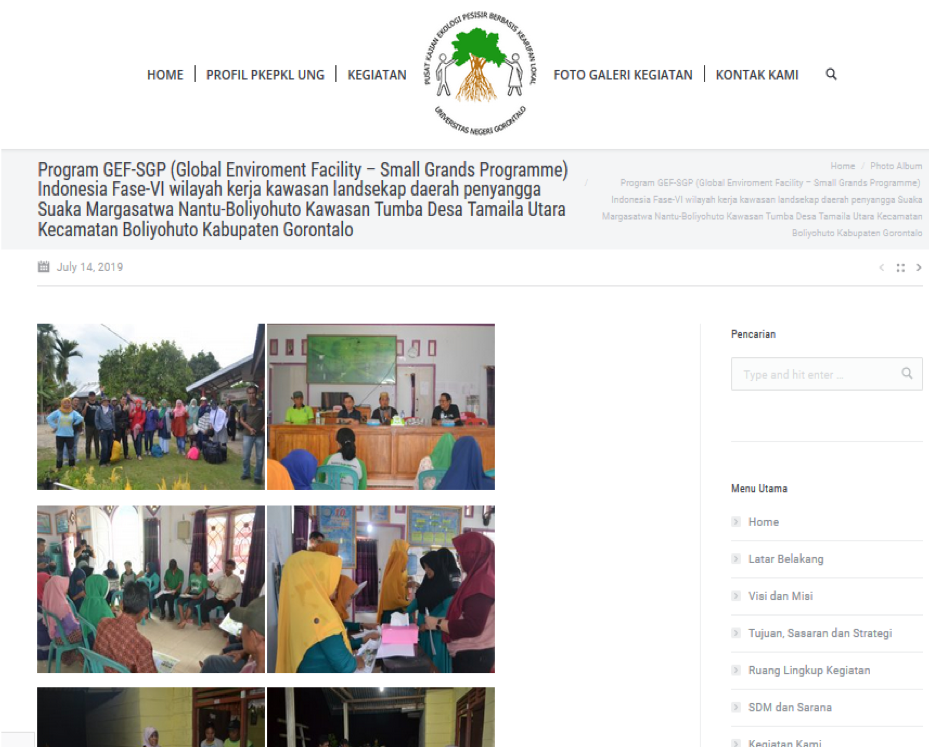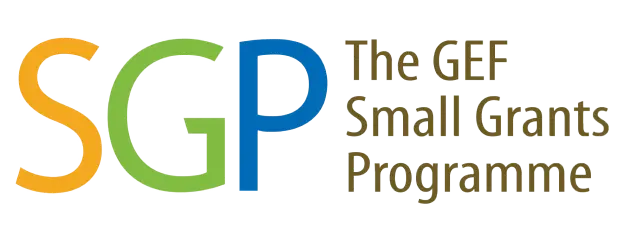Center for Coastal Ecology Studies Based on Local Wisdom (PKEPKL) Biology Department, FMIPA, Gorontalo State University
INS/SGP/OP6/Y2/STAR/BD/18/024
Goal 1:
Analysis of vegetation in the Tumba region's forest area
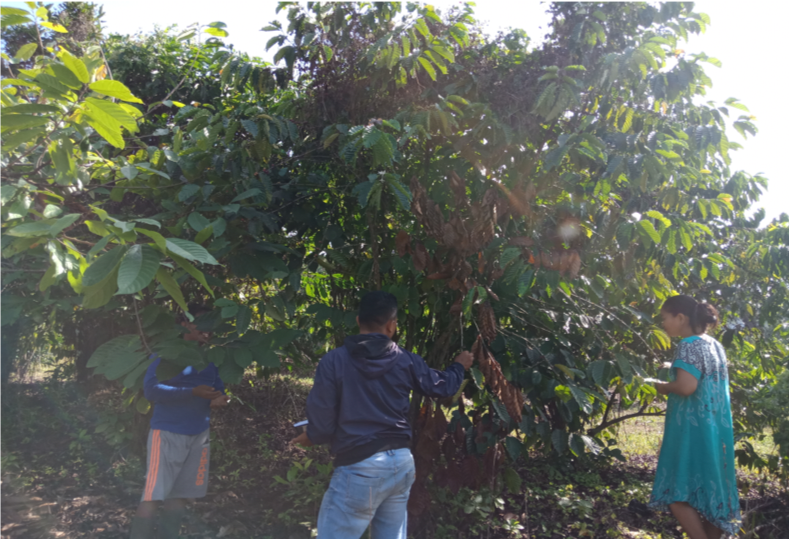
Photo 1: Activity stages of observing and collecting vegetation data on cultivated plants and non-cultivated plants in the Tumba area (October 2018).
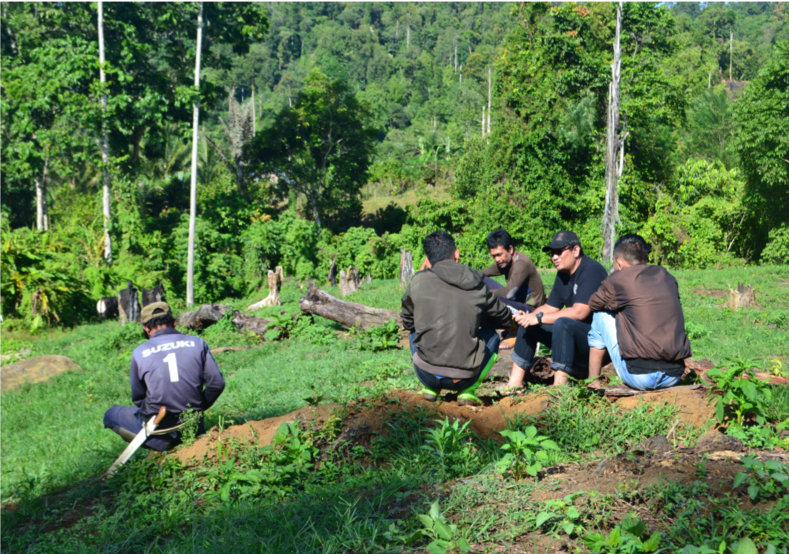
Photo 2: Field discussion activities regarding identification of vegetation types and diversity in the Tumba area. The background in the photo is the land area around Tumba which has various types of non-cultivated vegetation and cultivated vegetation (October 2018).
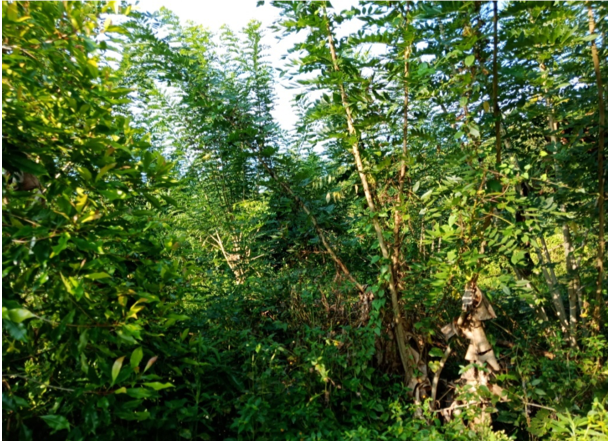
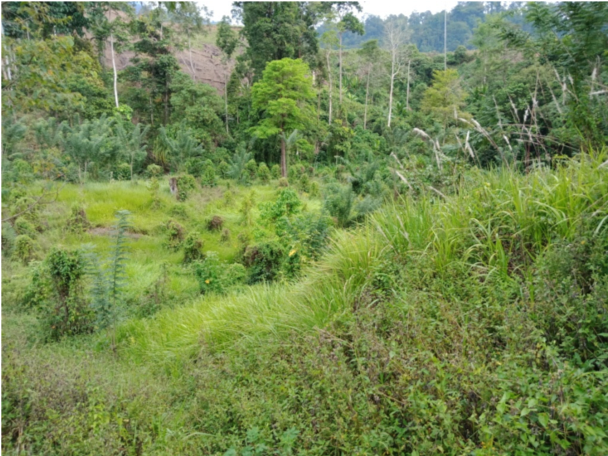
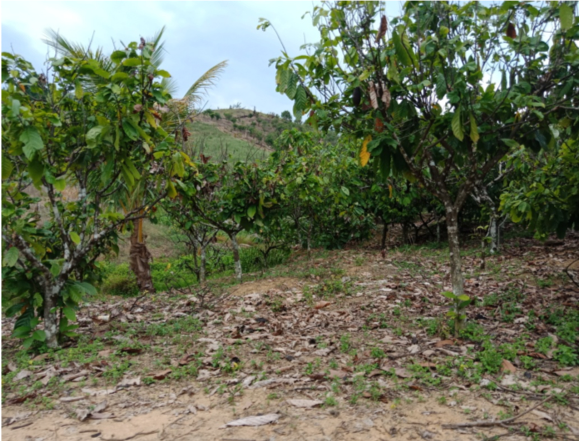
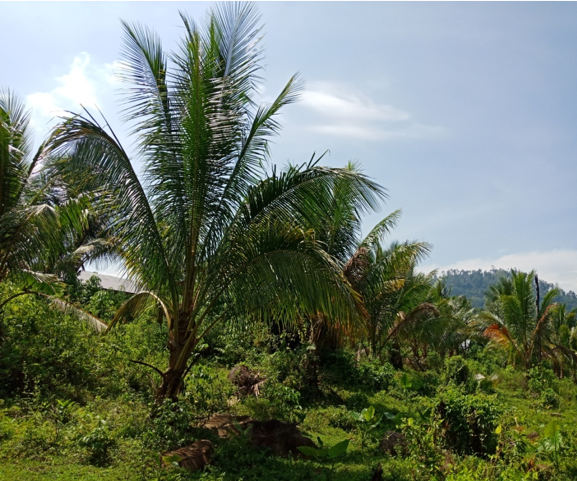
Photo 3: Several locations as sampling points for vegetation analysis in the Tumba area which are grown by non-cultivated plants and cultivated plants (October 2018).
Goal 2:
Identification/inventory of forms of local wisdom of community groups and understanding of sociocultural, cultural and local wisdom values of communities around forest areas.
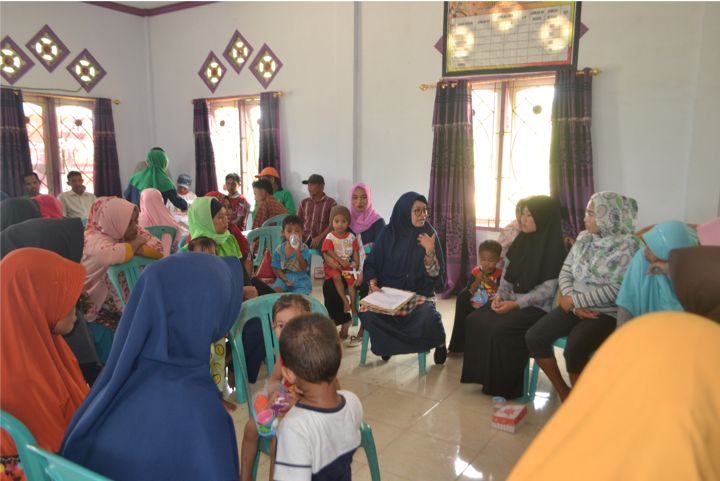
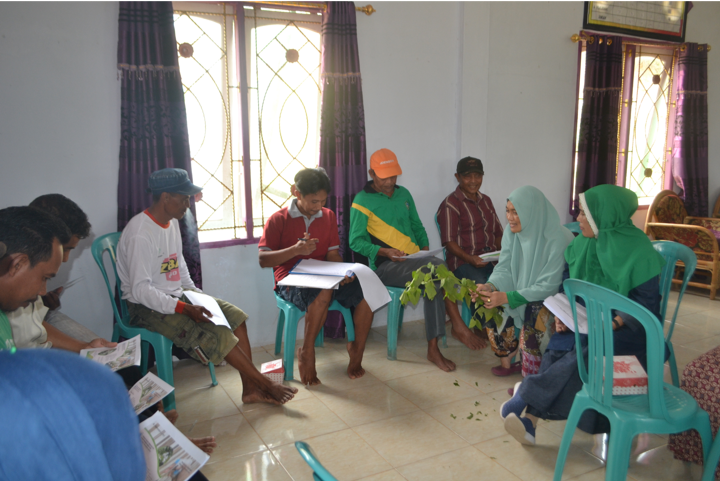
Photos 4 and 5: Focus Group Discussion (FGD) process regarding an inventory of local community wisdom (November 2020).
Photos 6, 7 and 8: Village discussions with the Tumba region community in determining the form of local wisdom they have, which consists of 10 types of local wisdom including:
Get to know wild plants that have healing medicinal properties; make concoctions for your own needs, for example: Banana yakis: cold sore/smallpox. Tomula yellow/Chinese bamboo liver medicine, cat root: shortness of breath; Communication via chain messages; Gender-based Mohuyula. When planting: division of roles between men and women; there is an agreement in the form of enforcing levies from each member of the Huyula as operational costs for implementing the Huyula; Local knowledge and skills; they know seeds that are not easily attacked by mice. The number of seeds planted is odd; Family celebrations, where there is shared togetherness at every family activity/celebration in the form of bringing/giving donations of materials for the purposes of the celebration in the form of livestock (chickens) from vegetable and spice gardens; Have a high emotional connection with the environment and nature. Had worked outside Gorontalo for more than 10 years and would still return to Tumba; Local skills and knowledge about “Molapo = fumigation” controlling corncob borer pests; Knowledge of Astrology (Panggoba).

Goal 3:
Development and application of learning about forest diversity and ecosystems characterized by local wisdom at the formal education (SD) level which raises awareness that can support the management of forest diversity and ecosystems
Photos 10, 11 and 12: Implementation of forest ecosystem learning characterized by local wisdom using learning module products for elementary school students in the Tumba area, facilitated by the PKEPKL team and assisted by the KKN Student Group.

Goal 4:
Production and use of natural fertilizers and pesticides by utilizing Siamese Weed (Chromolema odorata) as raw material, on corn agricultural land and other cultivated plants (Manufacture of natural pesticides)..
Photos 13, 14 and 15: Practical activities for making natural fertilizers and pesticides from Siam weed (Chromolemaodorata) raw materials.

Photos 16, 17, 18, 19 and 20: Application of natural fertilizers and pesticides to cocoa and chili seedlings as well as to the demonstration plot.
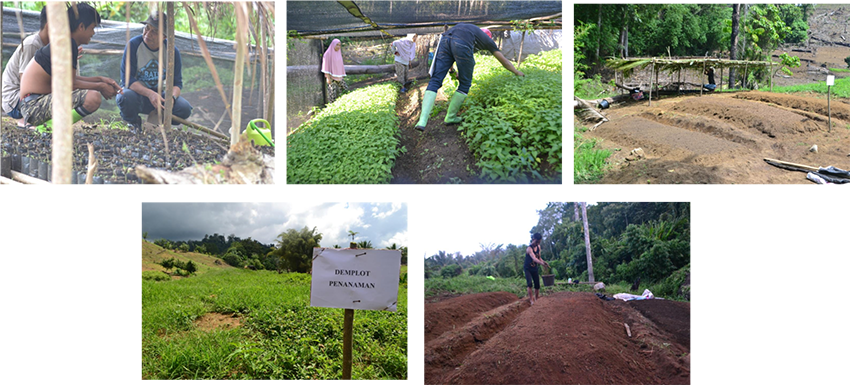
Goal 5:
Application of the Agroforestry system in increasing and utilizing Cocoa and Coconut plants as an alternative to increasing the independence of the Tumba community
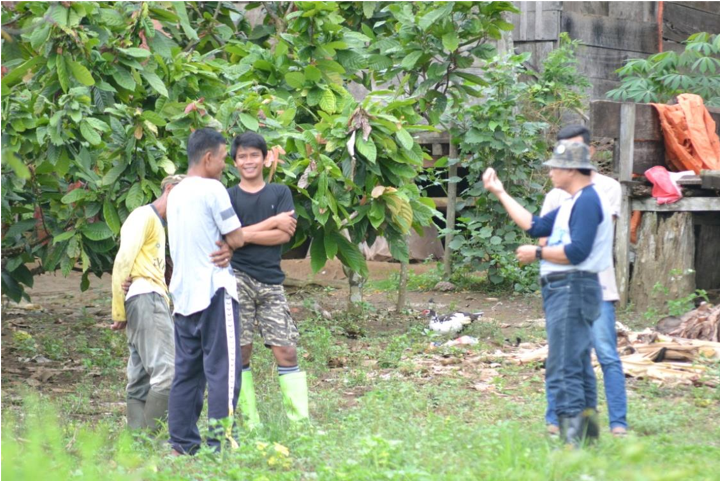
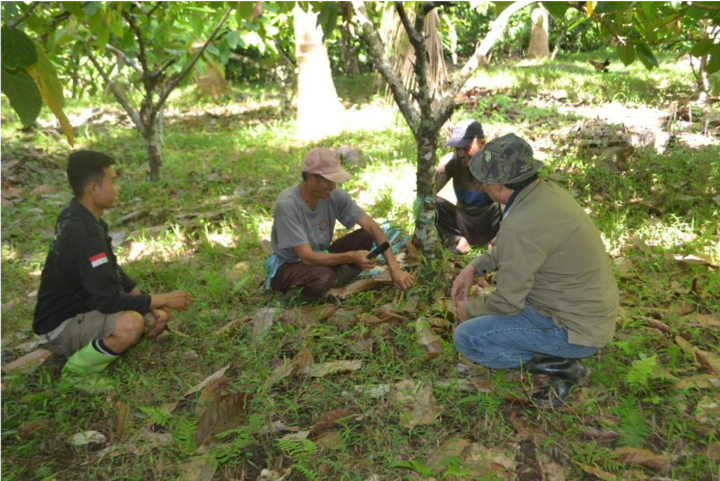
Photos 21 and 22: Personal discussions and practices between the person in charge of the program, program coordinator, field assistant facilitator and assisted farmers continuously to increase farmers' understanding of procedures for caring for cocoa plants and better environmentally friendly agricultural systems (Agroforestry).
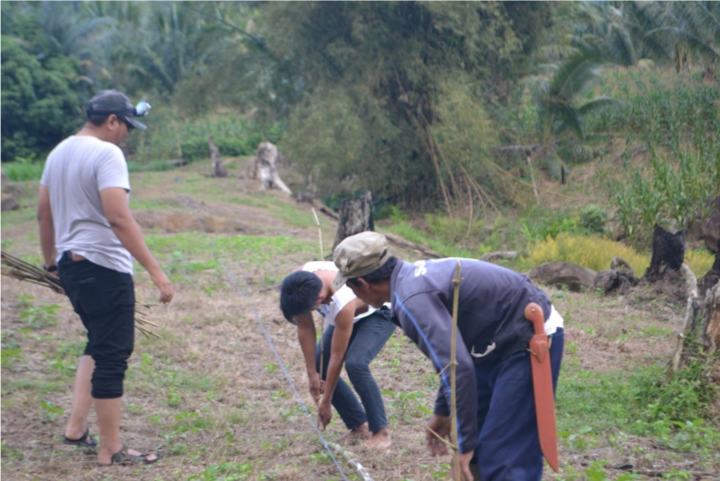
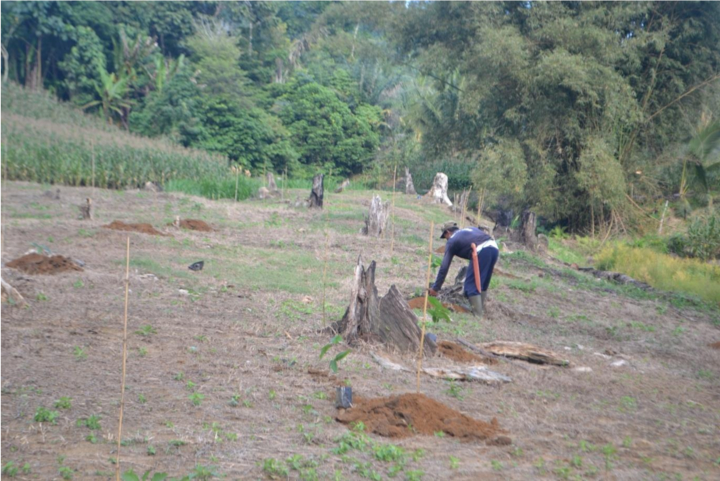
Photos 23 and 24: Land preparation activities for agroforestry farming systems. Land preparation is carried out by referring to a form of local wisdom that uses a date and month calculation system.
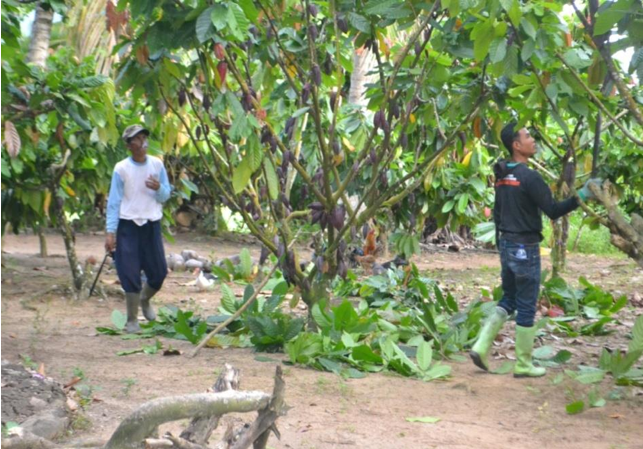
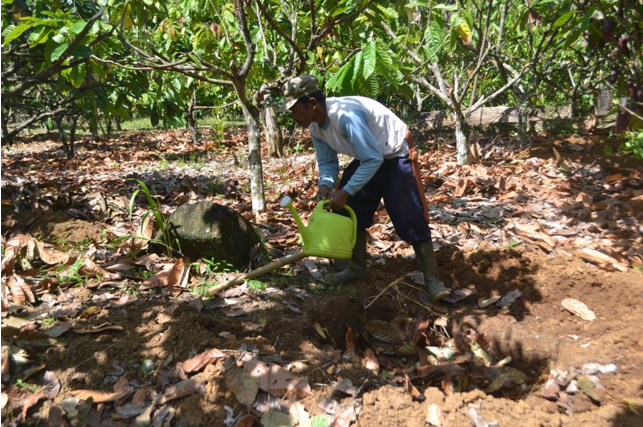
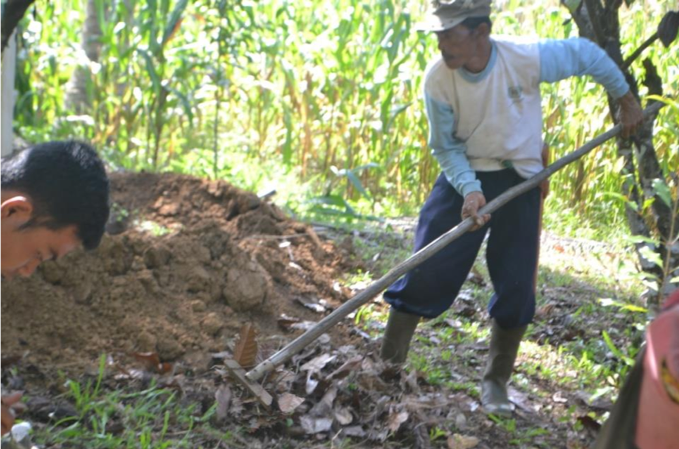
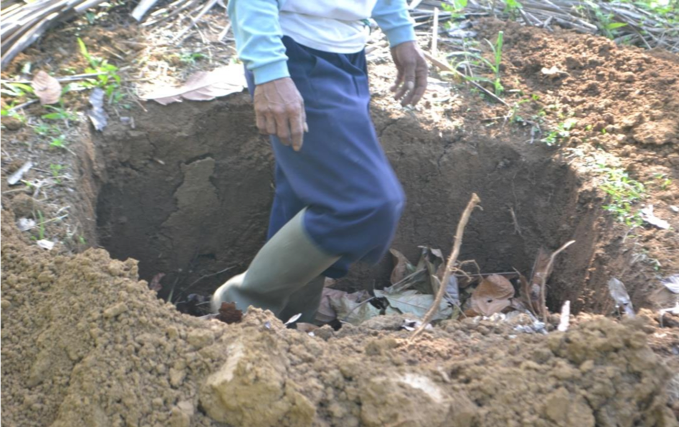
Photos 25 and 26: Practice of implementing procedures for caring for cocoa plants (pruning water branches and clearing land) as well as environmentally friendly farming systems and the use of organic fertilizers, natural pesticides and making compost.
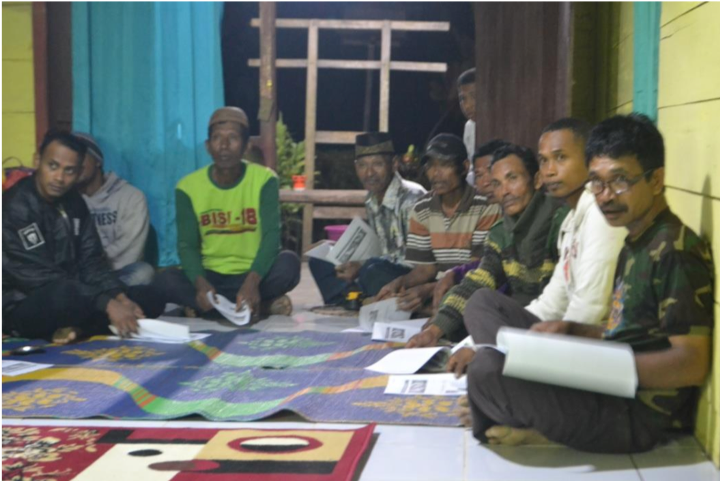
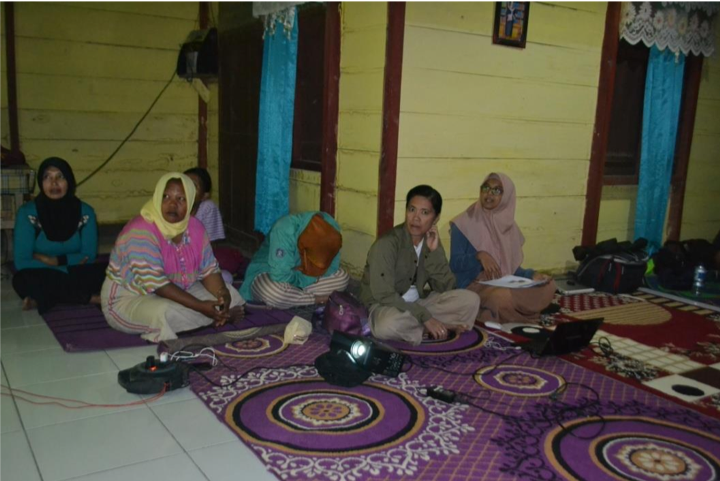
Photos 27 and 28: Continuous joint discussions between the person in charge of the program, program coordinator, field facilitators and farmers continue to be carried out to increase the understanding of farmers regarding procedures for caring for cocoa plants and environmentally friendly farming systems and the use of organic fertilizers, natural pesticides and increasing the capacity of farmers by discussing farmers' needs regarding income which can be answered by comparing the profits obtained when using organic fertilizers and purchased fertilizers. from middlemen
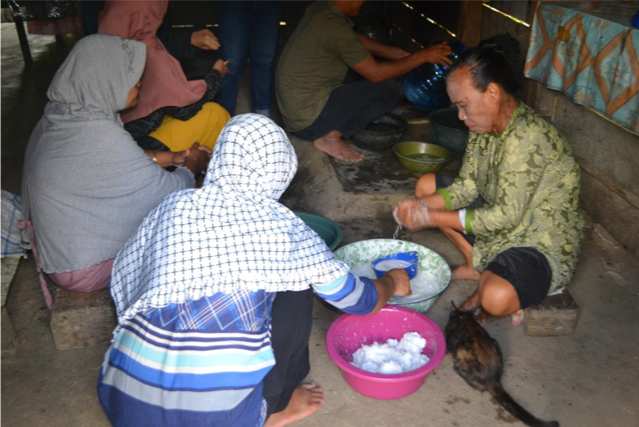
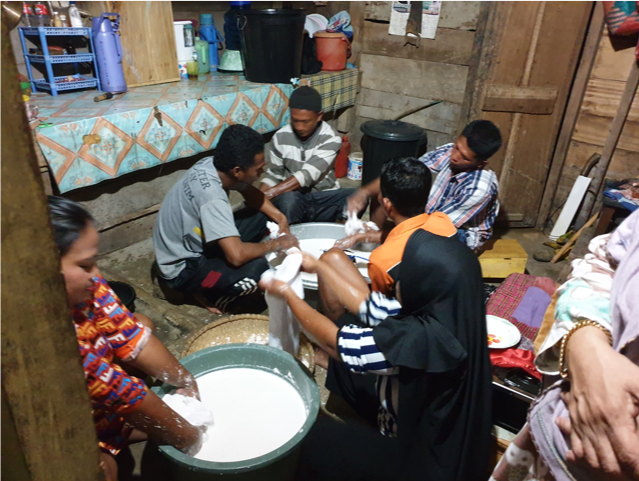
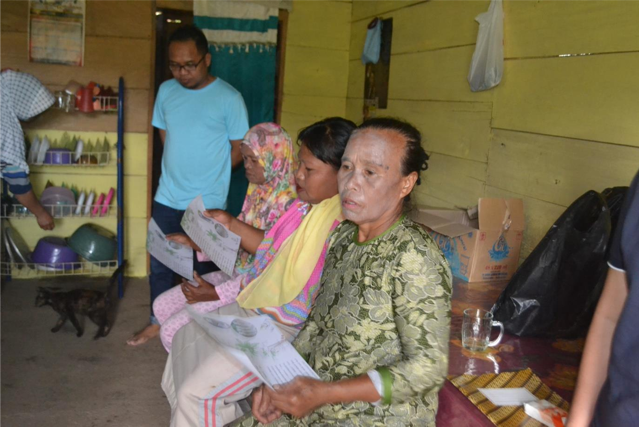
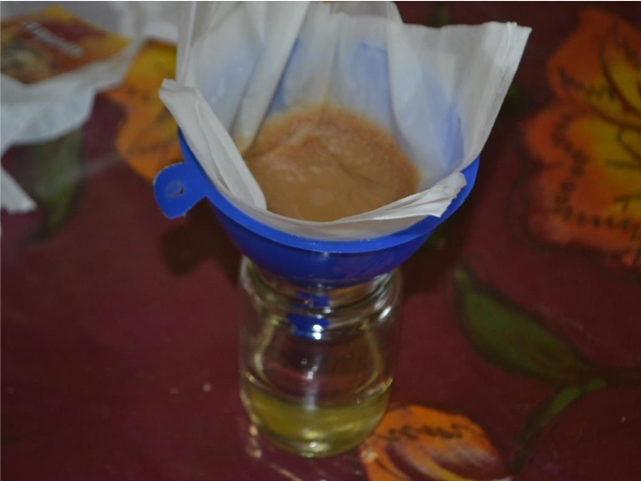
Photos 29 and 30: Practice of post-harvest processing of coconuts into VCO by a group of women.
Tujuan 6 :
Create a form of guidance in the use of biodiversity and forest ecosystems that is based on the local wisdom of the community which is regulated and ratified by the Village Head's Decree.
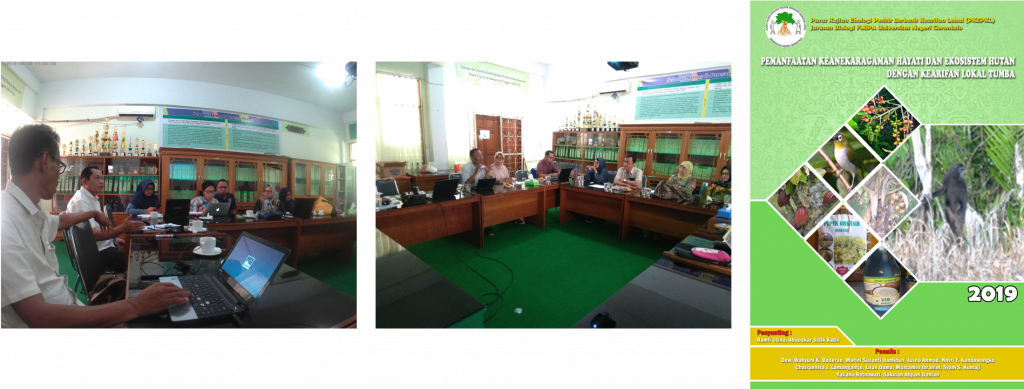
Photos 31 and 32: Discussion of the process of preparing a guidebook for the use of biodiversity and forest ecosystems that is based on local community wisdom.
Photo 33: The resulting book product.
IMPACT OF ACTIVITIES
- Implementation of a sustainable agroforestry system. The use and use of annual plants on land owned by assisted communities is a solution for systematically enriching food diversity to maintain the stability and resilience of landscapes and forest areas that are integrated into the stability of water catchment areas and biodiversity. The sustainability of the target production system is strengthened by new knowledge breakthroughs such as care and selection of crop commodities, especially cocoa and the use of coconuts to make VCO coconut oil. VCO coconut oil production is a knowledge intervention and new technological breakthrough for the assisted communities. The outcome is the formation of women's groups who develop small-scale household businesses but can increase household economic income.
- There is a program carried out by partner organizations, namely PKEPKL together with LPPM UNG, collaborating in the field of research and community service which is held in the assisted area (Tumba) and the Village Center as a continuation of the program that has been implemented.
- Strengthening the role of women's groups in managing agricultural resources and products in the Tumba region.
- There is support from the Gorontalo district government which is directly conveyed by the Regent as the regional authority who is the location of the program intervention.
Photo 33: Mechanically applied sloping terraces on demonstration plots in the Tumba area
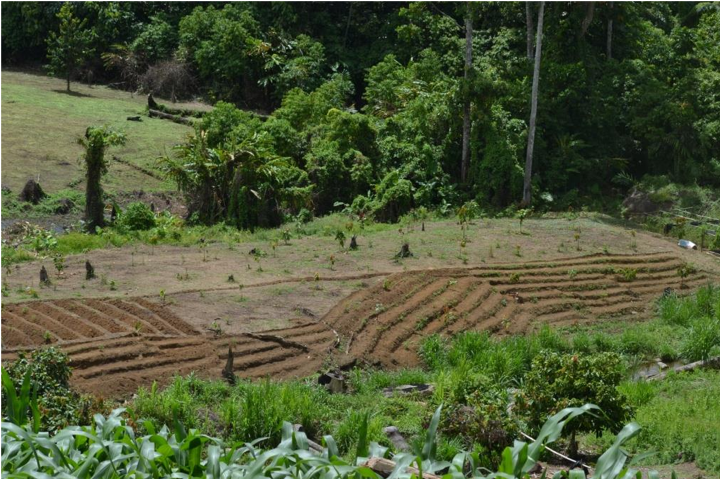
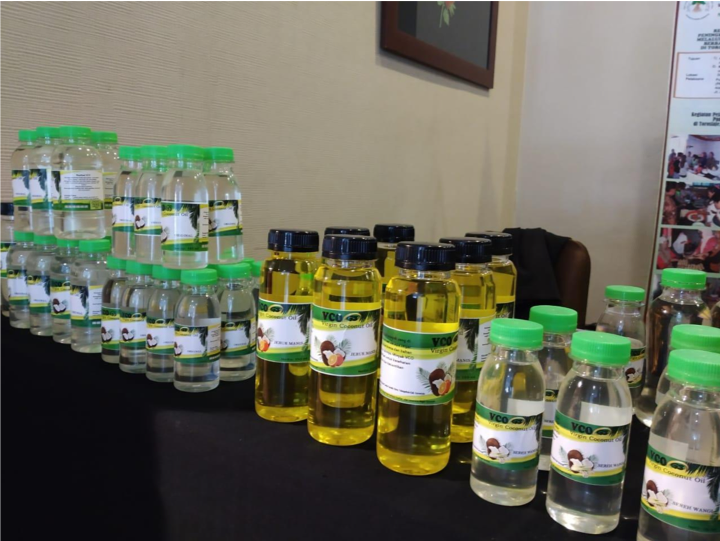
Photo 34: group of women (mothers) at the VCO coconut oil making activity

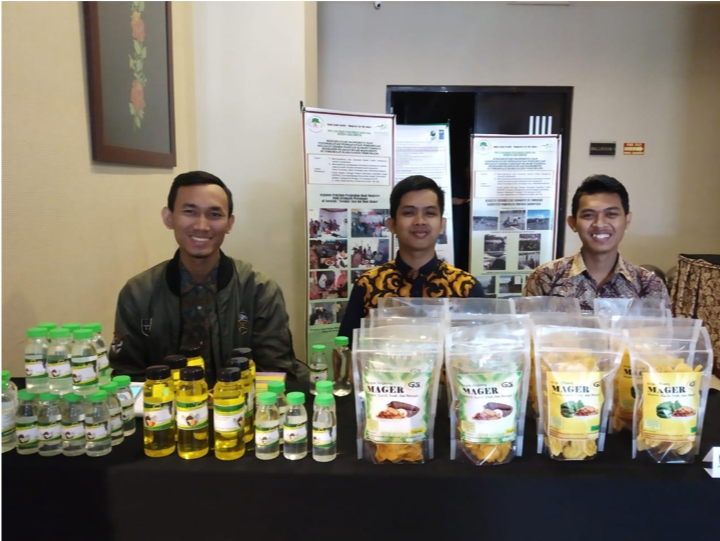
Photos 35 and 36: Products processed by assisted groups which have been exhibited in several events at local and national levels and are marketed on a limited scale.
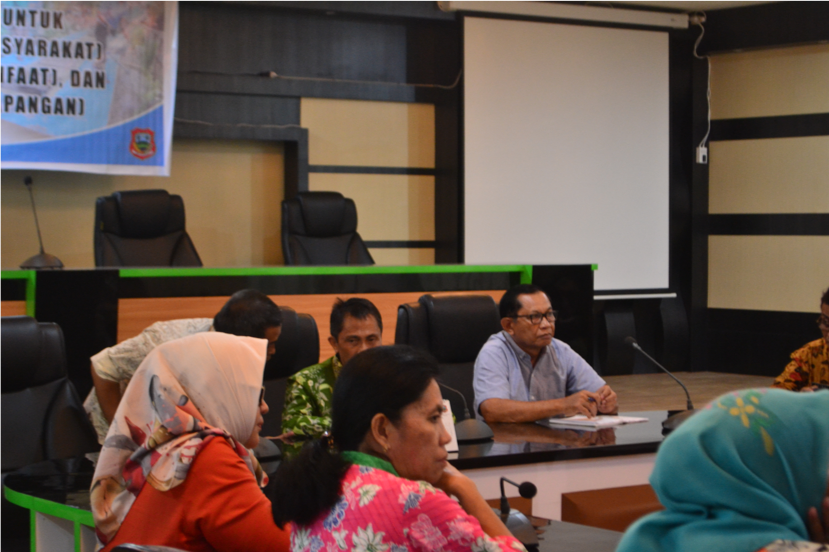
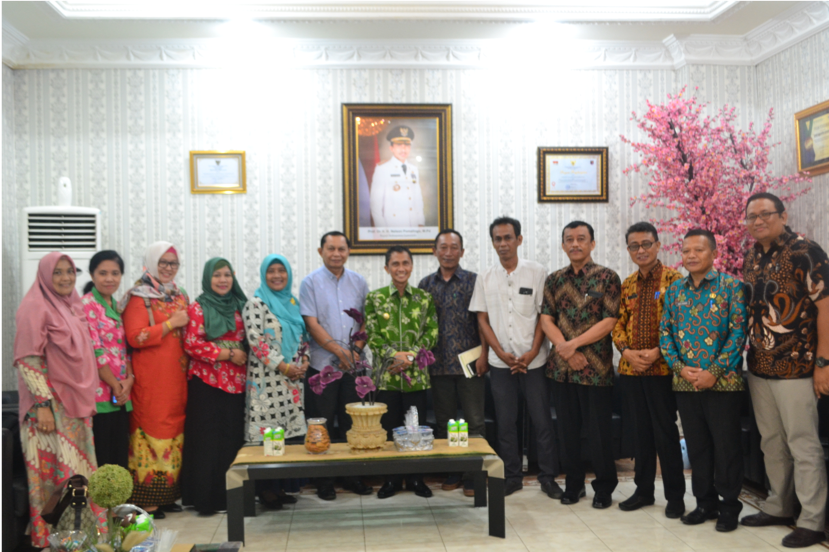
Photos 37 and 38: Discussion and description of support from the Regent of Gorontalo Regency as the stakeholder in the area that is the location of the Program intervention
Best Experience
- The landscape conditions in the Tumba region, which have quite high diversity, have provided inspiration for varying the forms of activities carried out. The activities carried out will basically lead to the sustainability of the natural landscape potential available at the Tumba location.
- The development of ideas from the team to conduct research regarding the potential of the landscape in the assisted locations, for example research on the potential for soil fertility. The enthusiasm of the assisted residents in developing the progress that has been intervened is an encouragement and enthusiasm to carry out activities.
- Women's activity in the assisted area (Tumba) is very high, both in agricultural activities and household activities. The decision made by women to engage in agricultural activities is an action that is entirely to meet the needs of the family.
- The building of competency through intervention in the management, maintenance, upkeep and utilization of existing resource potential and accompanied by a strategy of providing education on systemic issues related to market scope and profit and loss from agricultural activities with the aim that this step will provide a change in the mindset of residents assisted farmers.
Program Sustainability
The need for new and constructive knowledge in strengthening the capacity of integrated residents in the use and management of landscape potential, further management of local commodities coupled with the wise and appropriate use of agroforestry systems by farming communities, in this case the procedures and treatment of farmers in managing land, planting, care, maintenance and knowledge of post-harvest management.
Media Publication
Publication of activities via social media Facebook
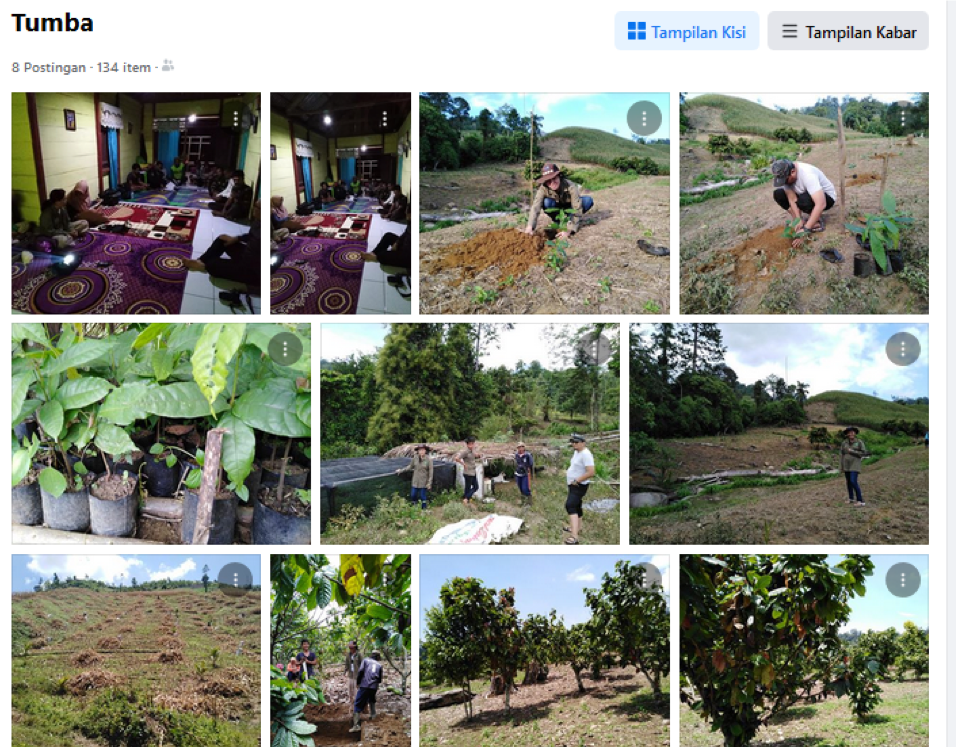
Publication of activities through the website: https://pkepkl-ung.org
